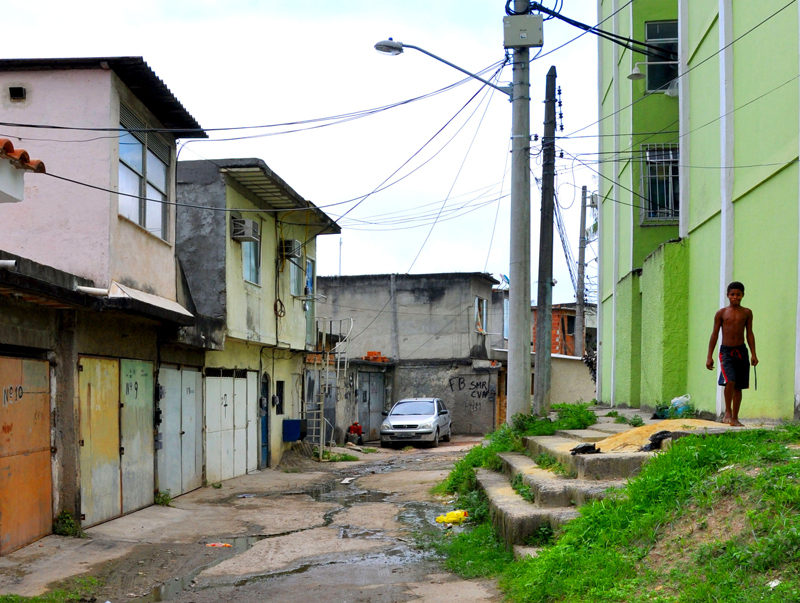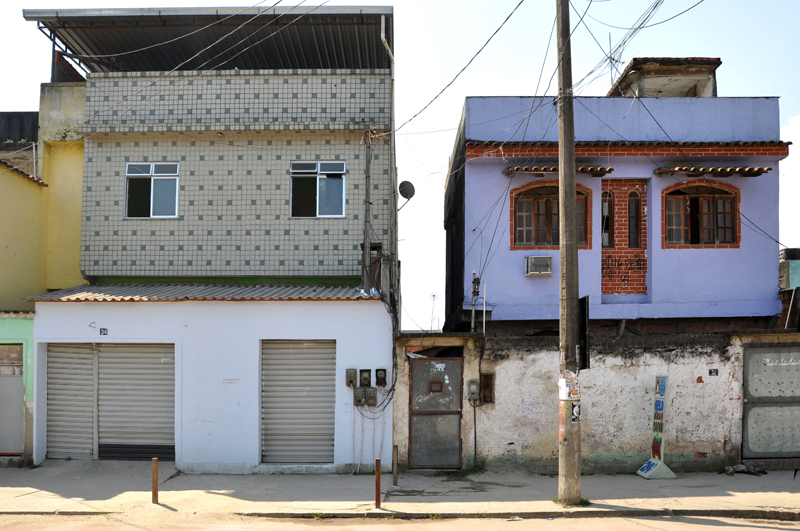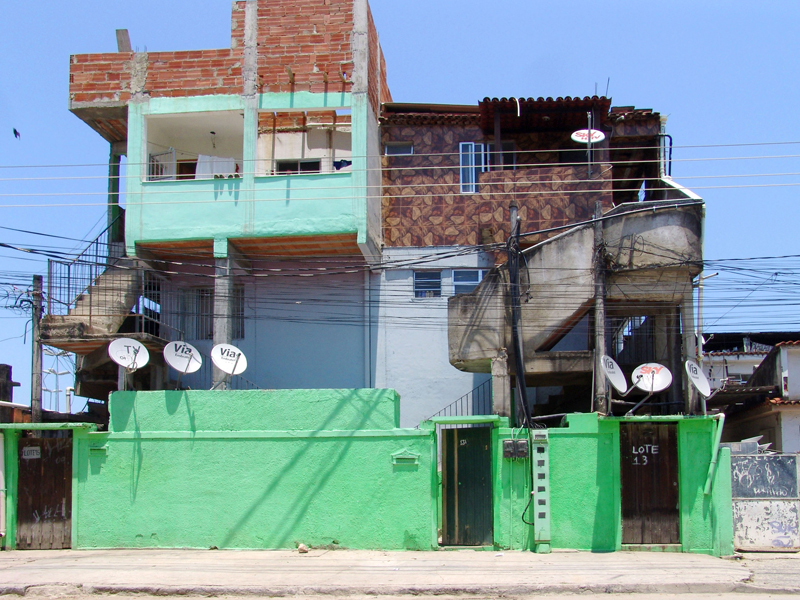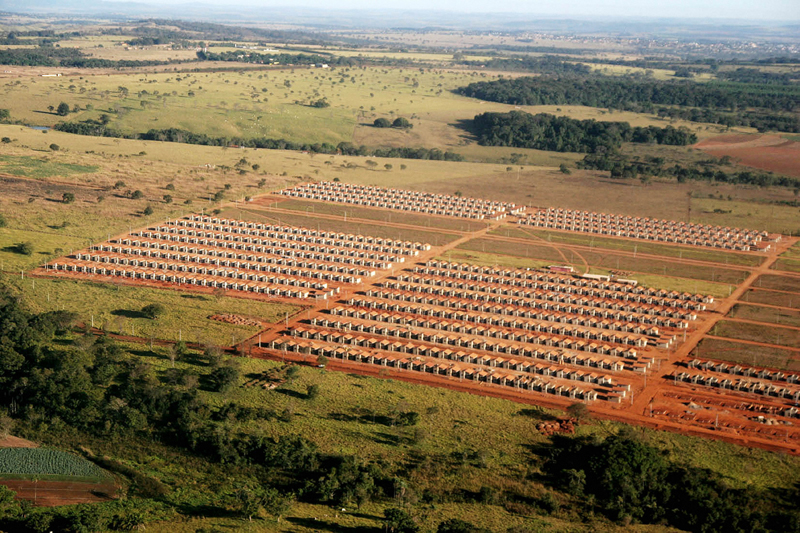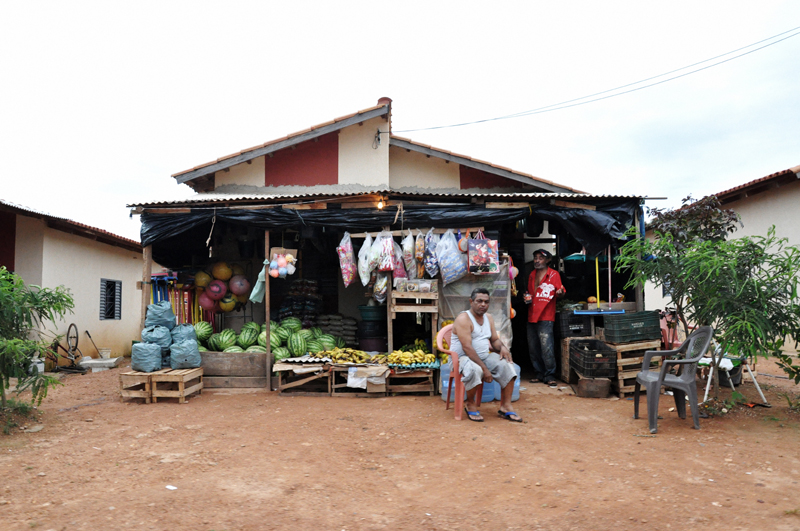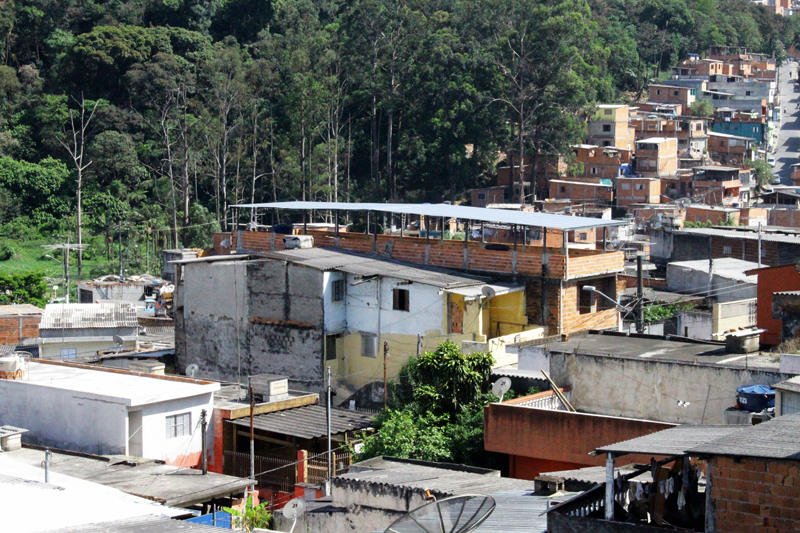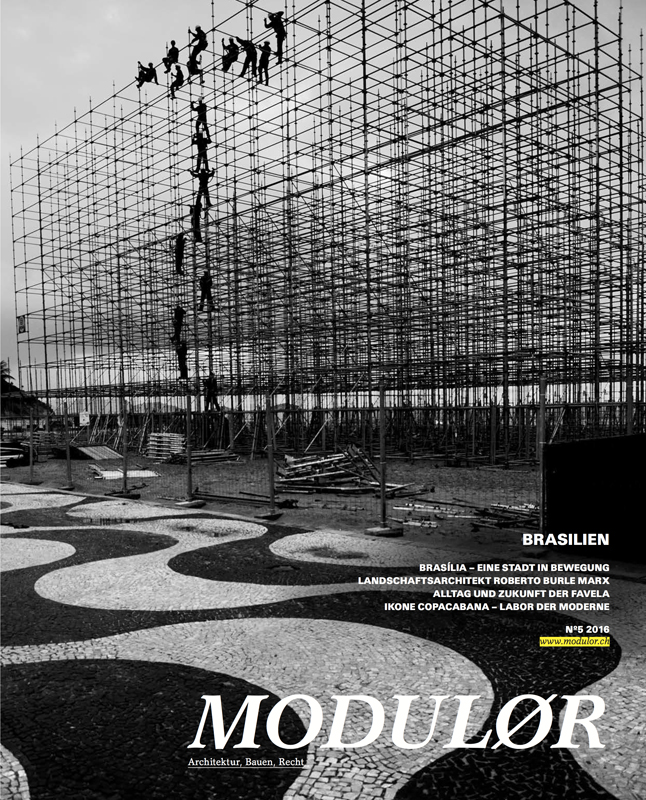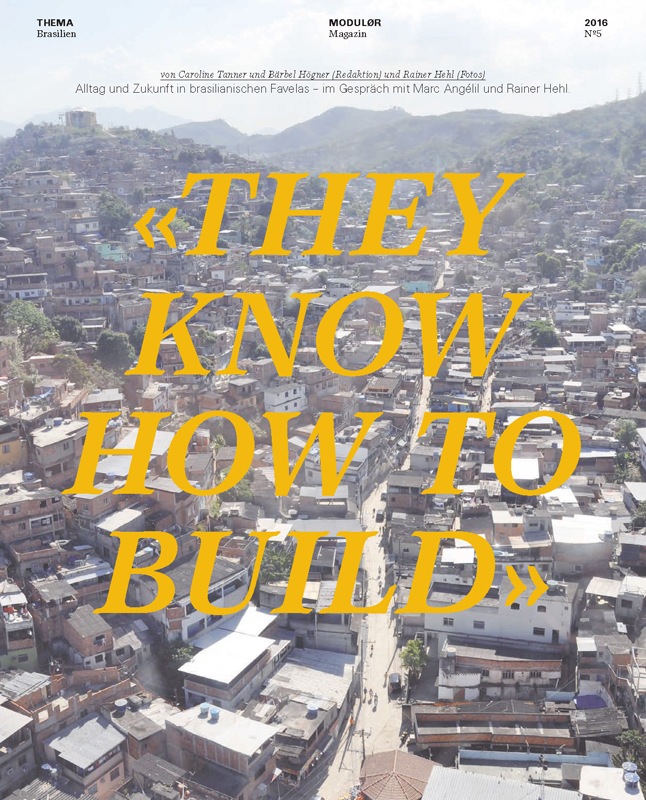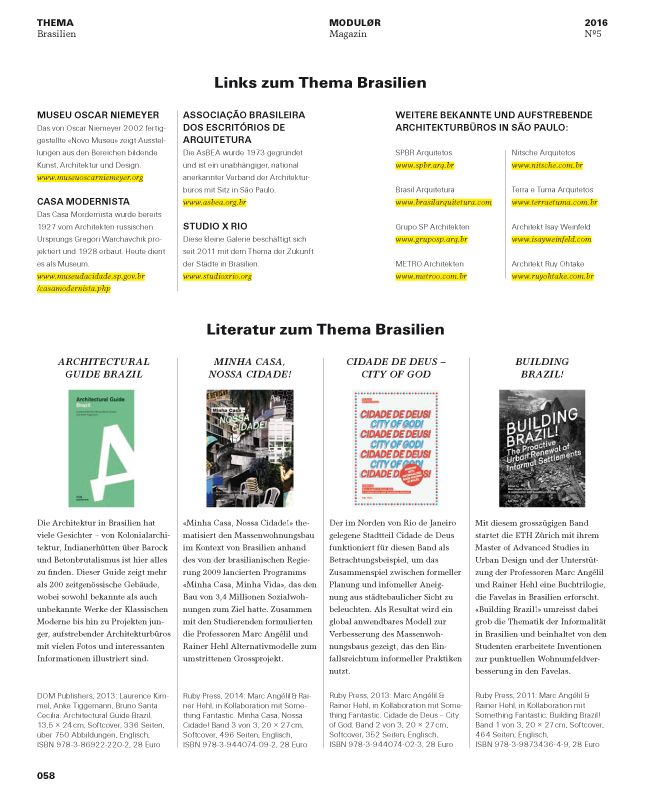Ruby Press Authors featured in MODULØR magazine
Has watching the Olympics made you curious about Brazil and its architecture? Then be sure to check out the newest issue of the Swiss architecture magazine MODULØR, which focuses on Brazil, its cities, and its culture of building.
The issue features an interview with two longtime Ruby Press collaborators, Marc Angélil and Rainer Hehl. They explain the methods and ideas behind their research and teaching project at the ETH Zurich on informality and urban transformation in Brazil, the results of which are compiled in the Ruby Press books Building Brazil! (2011), Cidade de Deus (2013), and Minha Casa, Nossa Cidade (2014).
Hehl and Angélil highlight the unique characteristics of informal urbanism in Brazil. Take, for example, how favelas, despite their popular description as “slums,” have some fundamental differences from the unofficial settlements you’ll find in other parts of the world (all translations by author):
Rainer Hehl: The surprising thing about Rio is that the first structures in the favelas were timber houses that bear a strong resemblance to the vernacular architecture there. Since the 1950s, these timber houses have been replaced with reinforced concrete structures—reinforced concrete frames, which are filled in with brick walls. These frames are very stable. The inhabitants build these houses by themselves, as many favela residents work professionally on official construction sites. These specialists serve as a sort of informal construction industry in the favelas. So, the architecture of the favela is the product of a vernacular way of building with its own identity-generating elements. A few characteristic traits are tiles, colors, and a generally rustic atmosphere.
Marc Angélil: In contrast to the slums in India and Africa, you can’t really talk about “primitive” methods of construction in the favelas. On the contrary, the stable basic structure of the buildings generates a sort of order that can be built upon further. In terms of research, the fascinating aspect of all this is the phenomenon of transformation, which contributes to a gradual densification of built matter in the favelas. The city evolves from generation to generation!
Hehl and Angélil describe favela architecture as a form of vernacular architecture, affirming its place within the larger constellation of Brazilian architecture and pushing back against arguments that favelas are somehow an exception in the larger development of Brazilian urbanism. But this wasn’t without controversy, as the two architects explain:
MODULØR: Why did this description [of favela architecture as vernacular architecture] astonish people?
Hehl: Because in Brazil you have an unbelievable polarization between formal architecture, which is strongly influenced by the modernist style, and the architecture of the favelas. That also reflects the extreme class segregation in Brazil. Up to now, Brazilian architects haven’t grappled with favelas at all. For a long time, these settlements had a negative image due to drugs and criminality, although only a small fragment of the population actually had any contact with favelas to begin with. The fact that we placed the architecture of the favela within the ranks of Brazilian culture drew a lot of attention. There were newspaper articles and exhibitions after that. Of course, the advantage held by the foreigner, who’s able to come into a context and open up an entirely new perspective on things, was definitely at play there as well.
Their most recent research has focused on “Minha Casa, Minha Vida” (my house, my life), a mass housing program initiated in 2009 by then Brazilian president Luiz Inácio Lula da Silva with the goal of creating three million new housing units for the poor by 2014. Critical of the way in which the program went hand in hand with the interests of the Brazilian construction industry as well as the single-function, low-quality settlements that resulted, Hehl and Angélil explain how they set about working with students to develop alternative guidelines for the program that would allow for more public spaces, non-residential functions, and participatory processes. While these interventions didn’t work out due to a number of unlucky circumstances (you’ll have to read the interview for the fascinating details), the work that went into them have helped the two architects formulate what they see as a promising direction for the future development of the favelas:
Angélil: […] With our research project “Housing the Co-op,” we want to encourage the implementation of the cooperative model in housing. This means that our research also has a political dimension to it.
Hehl: The cooperative principle is really difficult to implement in Brazil, because people from the lower economic classes there have only a very bad social insurance system to fall back on. Collectively held property in the form of a housing cooperative could, in this regard, serve as a type of social safety net. We see a large potential in legalizing the practice of self-construction in the favelas and embedding it into positive organizational structures. Doing that should also allow for technical know-how and collective spaces to come about.
While their research has focused on analyzing the favelas in order to make suggestions, Hehl and Angélil also emphasize that developed countries also have something to learn from the architecture of favelas, too—that the transfer of knowledge doesn’t just flow from North to South, but in the other direction as well:
Hehl: In Switzerland, it’s especially important today to learn more about the large urban transformations happening in the world. These are megatrends, which we otherwise wouldn’t really experience here in Switzerland. Over and over again, we could see in the students how their horizons were being expanded and how they suddenly realized how much there is to do in this world.
You can read the full interview (in German) in the print edition of the magazine, available here.
If you’re curious about the results that came out of this research project, take a look at Building Brazil!, Cidade de Deus, and Minha Casa, Nossa Cidade, available in the Ruby Press webshop.
–Yuma Shinohara

